The City of London used to be filled with churches, but many of these had perished in the Great Fire and many more that were rebuilt at this time have long gone - damaged and destroyed by falling bombs during World War II or demolished to build up London's businesses. Visitors to London can see blue plaques on the sides of some buildings informing them that a church used to exist on the site and that it was demolished in a particular year. St. Bartholomew-the-Great is one of the oldest (built in 1123) surviving churches in London and it was lucky to have survived the catastrophes that brought down the other churches.
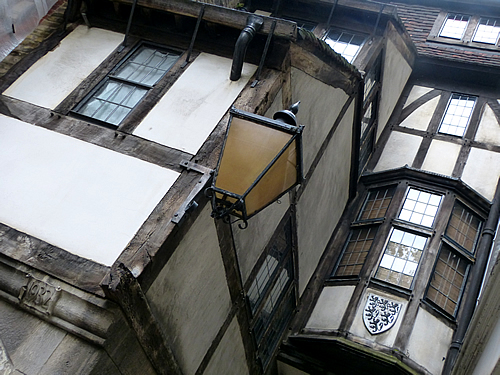
One of the entrance ways to the church miraculously survived fire and bombs. In fact, a zepplin air raid caused damage to St. Batholomew's hospital, which is located right outside this gatehouse. The damage can still be seen on the walls of the hospital. This same air raid damaged the building work that covered up this beautiful Elizabethan timber-framed gatehouse. This small glimpse with more modern buildings around it gives a glimpse into how London would have looked in older times.
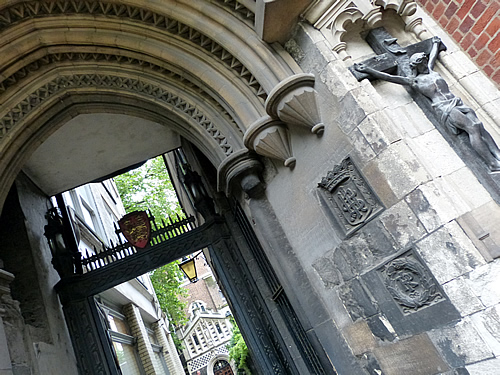
Through the gatehouse is the main entrance to St. Batholomew-the-Great. If you stand with your back to the archway, the hospital is just to your left and the covered wholesale meat market Smithfield's is directly to the right. This contains a plaque to Scottish freedom-supporter William Wallace, who was killed here after he was captured by the English. (This area, along with Tyburn River - near the current location of Marble Arch - was a place of execution.) Directly in front is a green area in the middle of a roundabout, and this is where several Protestants were killed by being burned to death in fires by Catholic Queen Mary. Such a nice place is London!
This is the area of Smithfield Market (read more about the meat market at Smithfield Market), where cattle and other animals were brought to be butchered. As a result, the area was filthy with cow mess, stench, blood and innards which were not properly drained away. Complaints were often lodged against drunken herdsmen and stampeding cattle, which would sometimes damage property.
We saw an information historical board about wife-selling at Smithfield Market, in the days when divorce was not common and too expensive. Yes, men could sell their wives if they were unhappy, but both husband and wife had to agree to this. Some wives also wanted to be sold. More about the practice of wife-selling in old England can be read here: http://en.wikipedia.org/wiki/Wife_selling_(English_custom)

After stepping underneath the archway, the church is directly in front. Some gravestones are lined up in the patch of green area around the church. The church was 2-3 pounds per adult to enter. The interior was altered a little bit as the area around the church changed, and at one point, the church was abandoned.
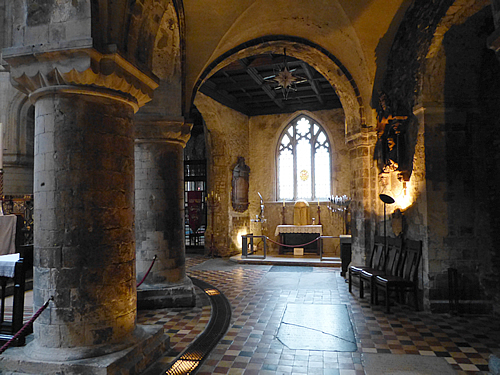
South aisle
We paid the entrance fee and entered St. Bartholomew-the-Great. We admired the brickwork and the tiles and the old age of the church. The church is also meant to be one of the most haunted, as this area of London is the most haunted. One of the suspected ghosts is meant to be Rahere, the founder of the church who was also jester to King Henry previously. His tomb is inside, and it was moved during work on the church (and a sandal stolen by a builder), and this is what was meant to have woken him up to haunt the area.
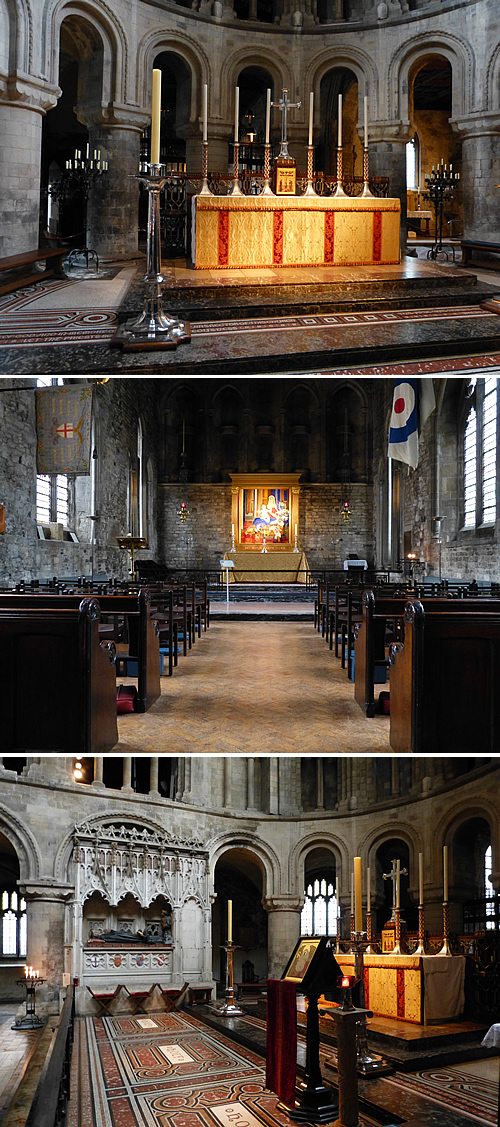
Medieval floor tiles could be seen in one corner in the east ambulatory. Also, in the picture below, note the old brickwork inside the archway.
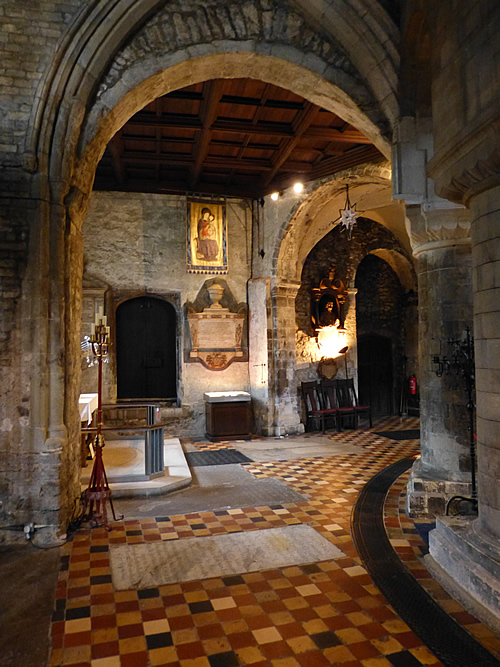
St. Bartholomew-the-Great has been used in the following films: Shakespeare in Love, Robin Hood Prince of Thieves and Four Weddings and a Funeral.
Right outside the church is the street named Cloth Fair, which was named after Batholomew Fair in the land outside and where part of the Smithfield Market is now built. (Note that the market building is a newer and Victorian construction; the market itself was open fields and land.) Bartholomew Fair was held annually by the monks to raise income for St. Bartholomew's, and it was essentially a cloth fair. It was the largest of its kind in Europe and attracted international merchants. The fair would attract street performers (wild animals, musicians, puppets, acrobats, prize-fighters, wire-walkers, freaks) and crime. The fair was held on St. Bartholomew's Day until 1855, and it was shut because of the public disorder. (More about the fair can be read here: http://www.historytoday.com/richard-cavendish/londons-last-bartholomew-fair)
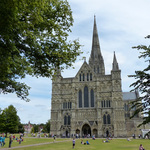
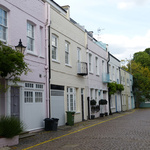
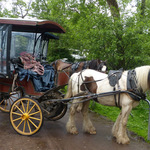
Leave a comment